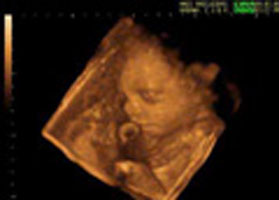In one of the more unusual but scientifically accurate defenses of the late-term abortion ban Congress will vote on today, a pro-life Texas congressman pointed out how unborn children masturbate in the womb.
Rep. Michael Burgess (R-TX) argued in favor of banning abortions late in pregnancy because he said science the humanity of the unborn child in numerous ways — including how babies before birth experience both pleasure and pain.
 “Watch a sonogram of a 15-week baby, and they have movements that are purposeful,” said Burgess, a former OB/GYN. “They stroke their face. If they’re a male baby, they may have their hand between their legs. If they feel pleasure, why is it so hard to believe that they could feel pain?”
“Watch a sonogram of a 15-week baby, and they have movements that are purposeful,” said Burgess, a former OB/GYN. “They stroke their face. If they’re a male baby, they may have their hand between their legs. If they feel pleasure, why is it so hard to believe that they could feel pain?”
The comment is drawing attacks from abortion advocates — who normally promote sex at every turn.
As the House of Representatives gears up for Tuesday’s debate on HR 1797, a bill that would outlaw virtually all abortions 20 weeks post fertilization, Rep. Michael Burgess (R-TX) argued in favor of banning abortions even earlier in pregnancy because, he said, male fetuses that age were already, shall we say, spanking the monkey.
That observation led Burgess to say he had argued for the abortion ban to start at a much earlier stage of gestation, 15 or 16 weeks. (This is less than halfway through a pregnancy.) He appeared to liken Roe v. Wade, the 1973 Supreme Court decision that legalized abortion, to the 1893 Plessy v. Ferguson decision that formally legalized racial segregation, and was not fully reversed until Congress passed the Civil Rights Act of 1964.
Do unborn children pleasure themselves in the womb? The answer appears to be yes, according to a 1996 letter to OBGYNs published in the Journal of OBGYNs. As they wrote:
We recently observed a female fetus at 32 weeks gestation touching the vuvla with the fingers of the right hand. The caressing movements were centered primarily on the region of the clitoris. Movements stopped after 20 to 40 seconds and started again after a few minutes. Furthermore, these slight touches were repeated and were associated with short, rapid movements of the pelvis and legs. After another break, in addition to this behavior, the fetus contracted the muscles of the trunk and limbs, and then clonicotonic movements [i.e. prolonged spasms] of the whole body followed. Finally she relaxed and rested.
We observed this behaviors for about 20 minutes. The mother was an active and interested witness, conversing with observers about her child’s experiences.
They drew the conclusion: “The female sexual response is separate from reproductive functions and doesn’t need a full sexual maturity to be explicit”.
Video of the remarks appears below:







